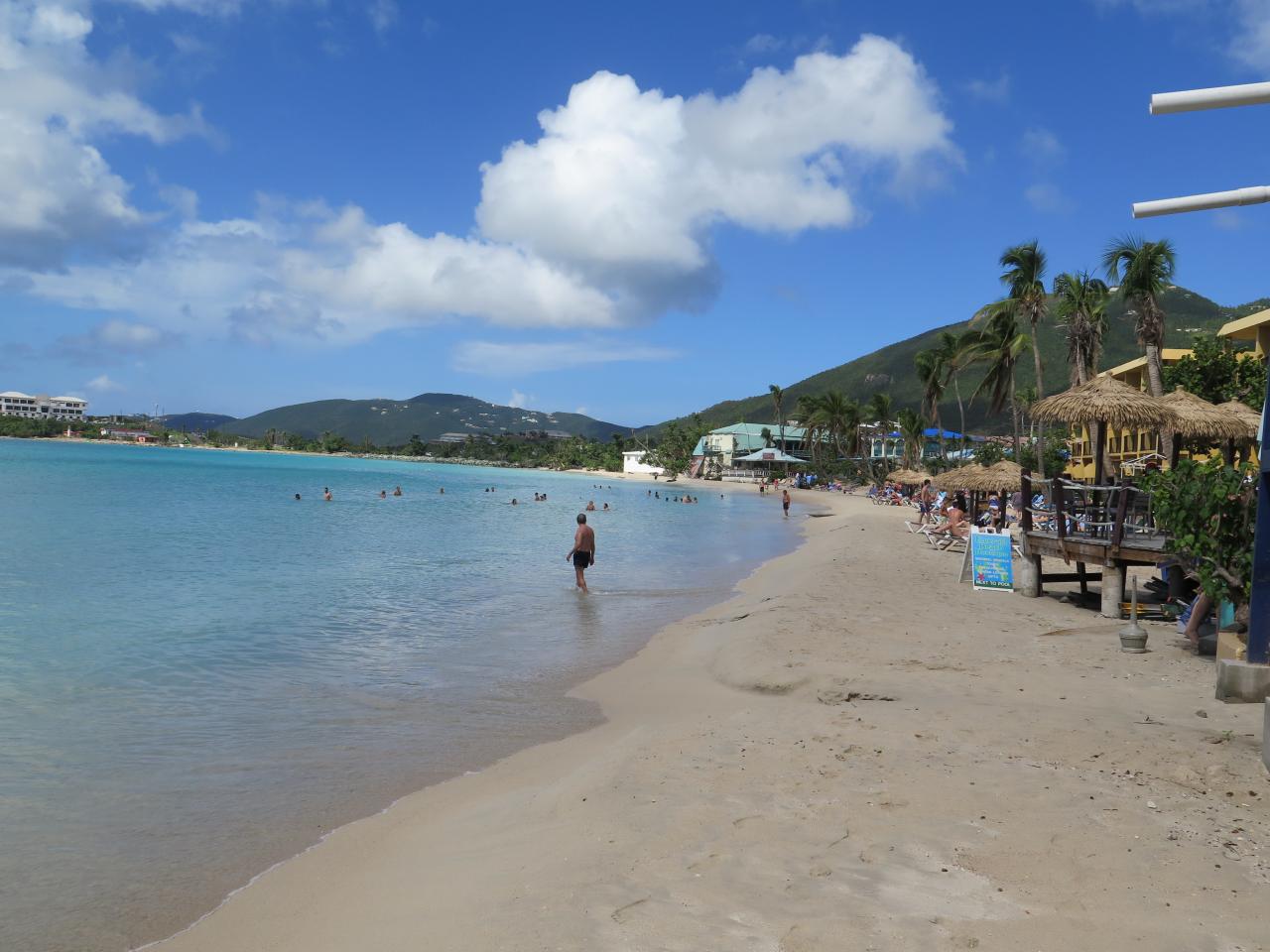British Virgin Islands Hurricane Preparedness and Disaster Relief Efforts
British Virgin Islands hurricane preparedness and disaster relief efforts are critically important given the islands’ geographic vulnerability and history of devastating hurricanes. This analysis explores the historical impact of these storms, examining the effectiveness of current preparedness measures, disaster relief operations, and community resilience strategies. We will delve into the challenges faced, successes achieved, and future improvements needed to safeguard the BVI from future hurricane threats, focusing on infrastructure, building codes, and community engagement.
The fragility of the BVI’s infrastructure and economy in the face of powerful hurricanes necessitates a multi-faceted approach. This includes robust early warning systems, well-defined roles for government agencies and community groups, and effective post-disaster relief strategies. The analysis will highlight the crucial role of international cooperation and the importance of investing in resilient infrastructure and community empowerment to minimize the impact of future hurricanes.
British Virgin Islands (BVI) Hurricane History and Vulnerability
The British Virgin Islands, a stunning archipelago in the Caribbean, possesses a breathtaking beauty that belies its inherent vulnerability to hurricanes. Its history is punctuated by devastating storms, shaping its infrastructure, economy, and societal resilience. Understanding this history and the contributing factors is crucial for effective disaster preparedness and mitigation.
Historical Impact of Hurricanes on the BVI
The BVI’s location squarely within the hurricane belt of the Atlantic Ocean means it’s frequently in the path of powerful storms. Numerous hurricanes have caused significant damage throughout its history, resulting in loss of life, widespread destruction of property, and long-term economic disruption. The impacts extend beyond the immediate aftermath, often leading to prolonged periods of recovery and significant social upheaval.
For example, the 1928 hurricane caused widespread devastation, highlighting the islands’ susceptibility even before modern building codes and forecasting systems. More recently, the impacts of Hurricanes Irma and Maria in 2017 demonstrated the immense destructive power of these storms, even with improved warning systems. The long-term recovery efforts, still ongoing in some areas, underscore the profound and lasting consequences of these events.
Geographical Factors Contributing to BVI’s Vulnerability
The BVI’s geographical characteristics exacerbate its vulnerability to hurricanes. The islands’ relatively small size and mountainous terrain mean that even moderate-strength winds can cause significant damage. The low-lying coastal areas are particularly susceptible to storm surges and flooding, which can inundate homes and infrastructure. The archipelago’s location in the hurricane belt, combined with its topography, creates a perfect storm for devastating impacts.
The lack of significant natural barriers further compounds this vulnerability, leaving the islands exposed to the full force of hurricane winds and waves.
Socio-Economic Factors Influencing BVI’s Preparedness and Recovery Capacity
The BVI’s socio-economic structure significantly influences its capacity for preparedness and recovery. The islands’ dependence on tourism makes it particularly vulnerable to economic disruption caused by hurricanes. Damage to hotels, resorts, and other tourism infrastructure can lead to significant job losses and a decline in revenue. Furthermore, the relatively small population and limited resources can hamper recovery efforts.
Access to funding, skilled labor, and building materials can be constrained, prolonging the recovery process. Inequalities in wealth distribution also affect resilience, with some communities being disproportionately impacted and having less capacity to rebuild. The reliance on external aid after major storms highlights the limitations of local resources in the face of catastrophic events.
Comparison of the Last Three Major Hurricanes Affecting the BVI
The following table compares the intensity and impact of the last three major hurricanes to significantly affect the BVI. Note that damage estimates are often revised over time and can vary depending on the source.
The British Virgin Islands have robust hurricane preparedness plans, including evacuation routes and emergency shelters. However, should you need to evacuate quickly, knowing how to upgrade to a luxury flight for less money, as detailed in this helpful guide how to upgrade to a luxury flight for less money , could prove invaluable. Post-hurricane, efficient and comfortable travel is crucial for aid workers and displaced residents alike, highlighting the importance of preparedness in all aspects.
| Year | Hurricane Name | Wind Speed (mph) | Estimated Damage (USD) |
|---|---|---|---|
| 2017 | Irma | 185 | > $5 billion |
| 2017 | Maria | 155 | > $1 billion |
| 2008 | Omar | 140 | ~$100 million |
BVI Hurricane Preparedness Measures
The British Virgin Islands (BVI) government has implemented a comprehensive framework for hurricane preparedness, encompassing proactive planning, robust response mechanisms, and community engagement strategies. This framework aims to minimize the impact of hurricanes on the islands’ infrastructure, economy, and population. The effectiveness of this framework is constantly evaluated and improved upon following each hurricane season.
Governmental Roles and Responsibilities in Disaster Preparedness
Several government agencies and organizations play crucial roles in BVI hurricane preparedness. The Department of Disaster Management (DDM) serves as the central coordinating body, responsible for developing and implementing the territory’s overall disaster preparedness plan. This includes coordinating early warning systems, resource allocation, and post-disaster recovery efforts. Other key players include the Royal Virgin Islands Police Force (RVIPF), responsible for maintaining order and security during and after a hurricane; the BVI Fire and Rescue Service, focused on search and rescue operations and fire prevention; and the BVI Health Services Authority, responsible for providing medical care and managing public health concerns.
The various ministries also contribute based on their areas of expertise, for instance, the Ministry of Transportation, Works and Utilities is vital for infrastructure maintenance and repair. Effective inter-agency communication and collaboration are critical to the success of the BVI’s disaster preparedness efforts.
Community-Based Preparedness Initiatives
Community involvement is a cornerstone of the BVI’s hurricane preparedness strategy. The DDM actively promotes community-based initiatives such as training programs on hurricane preparedness and response, volunteer recruitment and management, and the establishment of community shelters. These initiatives aim to empower residents to take proactive steps to protect themselves and their families. The effectiveness of these initiatives varies across communities, depending on factors such as accessibility to resources and levels of community engagement.
Regular community drills and workshops, coupled with easily accessible educational materials, are key to improving preparedness levels. Success is often measured by community participation in drills and the readiness of shelters to receive residents.
Adequacy of Early Warning Systems and Communication Strategies
The BVI utilizes a multi-layered early warning system, incorporating meteorological data from regional and international sources. This information is disseminated through various channels, including radio broadcasts, television announcements, text message alerts, and social media platforms. While the system generally functions effectively, challenges remain in ensuring equitable access to information across all communities, especially those in more remote areas with limited internet or cell service.
Improving communication to these areas, possibly through community-based radio networks or improved infrastructure, is an ongoing focus. The timely and accurate dissemination of warnings, coupled with clear and understandable messaging, is crucial for effective community response.
Hypothetical Public Awareness Campaign: “Ready BVI”
A hypothetical public awareness campaign, titled “Ready BVI,” would employ a multi-pronged approach to reach all segments of the BVI population. Key messages would emphasize personal preparedness, including creating a hurricane preparedness kit, developing a family emergency plan, and understanding evacuation procedures. Distribution channels would include radio and television advertisements featuring local personalities, targeted social media campaigns using engaging visuals and videos, educational materials distributed through schools and community centers, and workshops conducted in various communities.
The campaign would also utilize multilingual materials to cater to the diverse population. The overall goal is to build a culture of preparedness within the community, fostering resilience in the face of future hurricanes.
Disaster Relief Efforts in the BVI: British Virgin Islands Hurricane Preparedness And Disaster Relief Efforts
The British Virgin Islands (BVI), due to its geographic location and vulnerability to hurricanes, has developed a complex system of disaster relief infrastructure and response mechanisms. These efforts involve a combination of local, regional, and international collaborations, each with its own strengths and weaknesses. Effective relief hinges on pre-emptive planning, robust communication networks, and a well-coordinated approach to resource allocation and deployment.The BVI’s disaster relief infrastructure encompasses a network of government agencies, NGOs, and community-based organizations.
The Department of Disaster Management (DDM) plays a central role in coordinating relief efforts, working alongside the Royal Virgin Islands Police Force (RVIPF), the BVI Fire and Rescue Service, and the BVI Red Cross. These entities collaborate on pre-disaster preparedness, response during emergencies, and post-disaster recovery. Furthermore, the BVI benefits from its relationship with the UK government, which provides significant support during and after major disasters.
BVI Disaster Relief Infrastructure and Resources
The BVI’s disaster relief infrastructure includes pre-positioned supplies of food, water, and medical equipment in strategically located warehouses across the islands. Communication systems, including satellite phones and emergency radio networks, are crucial for coordinating relief efforts, especially in the aftermath of a hurricane when traditional communication networks may be down. The availability of trained personnel, including medical teams and search and rescue units, is also a key component of the BVI’s disaster response capabilities.
However, the limited resources of a small island territory mean that reliance on external aid is often necessary for large-scale disasters.
Examples of Successful Disaster Relief Operations
Following Hurricane Irma in 2017, the international community responded swiftly with significant aid. The UK government deployed military personnel to assist with search and rescue, the distribution of essential supplies, and the restoration of infrastructure. Local organizations, such as the BVI Red Cross, played a vital role in providing immediate assistance to affected communities, distributing food, water, and shelter.
The coordinated effort between international and local actors proved effective in addressing immediate needs and initiating the long-term recovery process. Post-hurricane Maria (2017), while less impactful than Irma, demonstrated the continued efficacy of this collaborative approach, showcasing the improvements made to logistical planning and resource allocation since Irma.
The British Virgin Islands maintain robust hurricane preparedness plans, including evacuation routes and emergency shelters. However, should you need to evacuate unexpectedly, consider reviewing tips for choosing the perfect luxury flight for your trip to ensure a comfortable and efficient journey. Effective disaster relief efforts are crucial for the islands’ recovery following a storm, and swift travel arrangements can aid this process significantly.
Comparison of International and Local Disaster Relief Efforts
International relief efforts often bring significant resources and expertise, particularly in areas like search and rescue and the provision of large-scale aid. However, these efforts can sometimes be hampered by logistical challenges and a lack of detailed local knowledge. Local disaster relief organizations possess a deep understanding of the BVI’s unique needs and challenges, allowing for a more targeted and effective response at the community level.
The most effective relief operations are those that seamlessly integrate international resources with the local expertise and knowledge of community-based organizations.
Challenges and Limitations in Past Relief Efforts
Past relief efforts have faced challenges related to logistical constraints, particularly the transportation of aid to remote islands and communities. Communication breakdowns due to damaged infrastructure have also hampered coordination. The scale of damage following major hurricanes, like Irma, can overwhelm even the most well-prepared relief systems, leading to delays in the distribution of essential supplies. Moreover, ensuring equitable distribution of aid across all affected areas can prove difficult.
The long-term recovery process, involving rebuilding infrastructure and supporting economic recovery, often requires sustained international and local commitment, and securing the necessary funding can be a considerable hurdle.
Distributing Essential Supplies After a Hurricane
Effective distribution of essential supplies following a hurricane requires a carefully planned and phased approach:
- Needs Assessment: Conduct a thorough assessment of the needs of affected communities, prioritizing immediate necessities like food, water, shelter, and medical supplies.
- Resource Mobilization: Gather and organize available resources, including supplies from pre-positioned stockpiles, donations, and international aid.
- Logistics Planning: Develop a detailed plan for transporting and distributing supplies, taking into account damaged infrastructure and accessibility challenges. This includes determining distribution points and utilizing appropriate transportation methods (e.g., helicopters, boats, trucks).
- Distribution Teams: Assemble trained teams responsible for distributing supplies, ensuring equitable distribution and addressing specific community needs.
- Security and Safety: Implement measures to ensure the safety and security of both distribution teams and recipients.
- Monitoring and Evaluation: Continuously monitor the distribution process, gathering feedback and making adjustments as needed to ensure efficiency and effectiveness. Post-distribution assessments will determine the success of the strategy.
Infrastructure and Building Codes
The British Virgin Islands, given its geographical location and susceptibility to hurricanes, relies heavily on robust infrastructure and stringent building codes to mitigate the impact of these powerful storms. The effectiveness of these measures, however, is a continuous area of evaluation and improvement. The interplay between building regulations, infrastructure resilience, and insurance mechanisms is crucial in shaping the islands’ capacity to recover from hurricane events.
Current Building Codes and Regulations
The BVI has building codes designed to withstand hurricane-force winds, incorporating aspects like wind load calculations, structural design requirements for roofs and walls, and the use of specified materials. These codes are regularly updated, aiming to reflect advancements in building science and lessons learned from past hurricanes. However, enforcement of these codes, particularly in older structures and less regulated areas, remains a challenge.
The level of compliance varies depending on the age and location of the building, as well as the resources available for inspection and enforcement. Stricter enforcement and regular inspections are essential to ensuring that all structures meet the minimum safety standards.
The British Virgin Islands’ robust hurricane preparedness plans are crucial for effective disaster relief. Efficient evacuation and aid distribution are paramount, and sometimes, long journeys are involved for those needing to leave the islands. For those who can afford it, the comfort of a flight on one of the top luxury airlines with best in-flight entertainment might ease the stress of such a displacement.
Ultimately, though, the focus remains on ensuring the safety and well-being of the BVI community during and after a hurricane.
Effectiveness of Existing Infrastructure
The effectiveness of existing infrastructure in protecting against hurricane damage is a complex issue. While newer structures built to current codes generally fare better, older buildings often suffer significant damage. Critical infrastructure, such as hospitals, schools, and power grids, has also shown varying degrees of resilience. Irma and Maria, in 2017, highlighted vulnerabilities in the power grid and communication networks, causing prolonged disruptions.
The reconstruction efforts following these hurricanes have incorporated improved designs and materials, aiming to enhance resilience. However, the limited resources available to the BVI pose an ongoing challenge to the complete upgrade of all infrastructure.
The British Virgin Islands maintain robust hurricane preparedness plans, including evacuation routes and emergency shelters. However, for those seeking the utmost comfort during potential evacuations or post-disaster recovery, consider the unparalleled luxury offered by luxury flight experiences with private suites and butlers , providing a tranquil escape amidst challenging circumstances. Swift and comfortable private air travel can be crucial for efficient disaster relief efforts and the safe relocation of individuals.
Role of Insurance in Mitigating Economic Impact
Insurance plays a vital role in mitigating the economic impact of hurricanes on the BVI. Comprehensive insurance policies can cover damage to property, businesses, and personal belongings. However, the affordability and accessibility of insurance, particularly for those in lower socioeconomic groups, remains a significant concern. The high cost of insurance premiums and the potential for insufficient coverage following major events necessitate a comprehensive review of insurance strategies.
Government initiatives, such as subsidized insurance programs or disaster relief funds, are crucial in ensuring adequate protection for the entire population.
Strategies for Improving Infrastructure Resilience, British Virgin Islands hurricane preparedness and disaster relief efforts
Improving infrastructure resilience requires a multi-faceted approach. This includes stricter enforcement of existing building codes, investment in advanced building materials and construction techniques, and the development of early warning systems. Strengthening the power grid and communication networks through redundancy and improved design is also paramount. Furthermore, community-based disaster preparedness programs can empower residents to better protect themselves and their property.
Effective hurricane preparedness in the British Virgin Islands is crucial, encompassing robust evacuation plans and efficient disaster relief networks. The speed and comfort of post-hurricane aid delivery are paramount, which leads one to consider the logistical aspects; for example, comparing luxury flight experiences between airlines, as seen in this informative article: comparing luxury flight experiences between airlines , could significantly impact the timely transport of essential supplies and personnel.
Ultimately, efficient disaster response in the BVI relies on effective coordination and swift transport solutions.
Strategic land use planning that considers hurricane risks and prioritizes the protection of vulnerable communities is also crucial. The incorporation of climate change projections into long-term infrastructure planning is essential to ensure future resilience.
Building Material Resistance to Hurricane-Force Winds
| Material | Wind Resistance (mph) | Cost | Availability |
|---|---|---|---|
| Concrete Block | 150-200+ (depending on construction) | Medium-High | High |
| Steel Frame | 200+ (depending on design) | High | Medium |
| Wood Frame (engineered) | 130-170 (depending on design and bracing) | Medium | High |
| Plywood Sheathing | Variable, dependent on grade and fastening | Low-Medium | High |
Community Resilience and Recovery
The British Virgin Islands’ vulnerability to hurricanes necessitates a robust approach to community resilience, extending beyond immediate disaster relief to encompass long-term recovery and preparedness. A strong, engaged community is fundamental to effective mitigation, response, and recovery efforts following a hurricane. This section explores the crucial role of community engagement in building resilience and fostering successful recovery initiatives.Community engagement is paramount for effective hurricane preparedness and recovery in the BVI.
The British Virgin Islands maintain robust hurricane preparedness plans, including evacuation routes and emergency shelters. However, for those needing rapid, post-hurricane evacuation or swift access to relief supplies, private jet charter offers a crucial advantage. For a comprehensive understanding of how to arrange such transport, consult this helpful resource: ultimate guide to booking a private jet for luxury travel.
Efficient evacuation and aid delivery are vital aspects of the islands’ disaster relief efforts, ensuring the safety and well-being of residents and visitors.
Active participation strengthens disaster preparedness planning, ensuring that plans are relevant and inclusive of the diverse needs within the community. During recovery, community involvement is essential for efficient resource allocation and the successful implementation of rebuilding projects. Furthermore, a cohesive community fosters social support networks that are vital for psychological healing and overall well-being following a traumatic event.
Successful Community-Led Recovery Initiatives
Following past hurricanes, several successful community-led initiatives have demonstrated the power of collective action. For instance, the “BVI Strong” initiative, a post-Hurricane Irma effort, leveraged the skills and resources of local residents to rebuild homes, restore infrastructure, and revitalize the economy. This initiative relied heavily on community organizing, volunteer work, and collaborative partnerships with NGOs and government agencies.
Another example involves the establishment of community-based early warning systems, empowering residents to take proactive measures during impending storms. These systems often utilize local knowledge and traditional communication methods to supplement official warnings. The success of these initiatives underscores the importance of community ownership and empowerment in the recovery process.
Factors Contributing to Community Resilience
Several interconnected factors contribute to a community’s ability to withstand and recover from natural disasters. Strong social networks, characterized by trust, mutual support, and effective communication, are crucial. Access to resources, including financial aid, building materials, and skilled labor, is also essential for effective recovery. Effective leadership, both formal and informal, plays a critical role in coordinating relief efforts, making decisions, and providing guidance to the community.
Finally, the presence of pre-existing community plans and infrastructure, such as well-maintained shelters and established communication systems, significantly impacts the speed and effectiveness of the recovery process. The ability to adapt to changing circumstances and learn from past experiences further enhances community resilience.
Strategies for Fostering Community Resilience
Fostering community resilience requires a multi-pronged approach that integrates preparedness, response, and recovery strategies. Pre-disaster planning should involve extensive community engagement, incorporating local knowledge and prioritizing the needs of vulnerable populations. This includes developing comprehensive community-based disaster preparedness plans, conducting regular drills and training exercises, and establishing clear communication channels. Post-disaster, strategies should focus on ensuring equitable access to resources, providing psychosocial support, and empowering community-led recovery initiatives.
This may involve providing grants for community projects, facilitating skill-building workshops, and establishing platforms for community dialogue and collaboration. Investing in resilient infrastructure, such as strengthening building codes and developing early warning systems, is also crucial for long-term resilience.
Impact of Psychosocial Support on Community Recovery
The impact of psychosocial support on community recovery is profound and multifaceted. Providing timely and appropriate psychosocial support can significantly improve community recovery outcomes.
- Reduces the incidence of post-traumatic stress disorder (PTSD) and other mental health issues.
- Promotes emotional healing and coping mechanisms among affected individuals.
- Strengthens social cohesion and fosters a sense of community resilience.
- Improves overall well-being and accelerates the recovery process.
- Facilitates effective community participation in rebuilding efforts.
Wrap-Up

Source: npr.org
Ultimately, the British Virgin Islands’ resilience to hurricanes hinges on a comprehensive strategy encompassing proactive preparedness, effective disaster response, and sustained community engagement. While significant strides have been made in improving preparedness and relief efforts, ongoing investment in infrastructure, community education, and international collaboration is crucial. Strengthening building codes, enhancing early warning systems, and fostering a culture of preparedness are essential steps toward mitigating the devastating effects of future hurricanes and ensuring the long-term safety and prosperity of the BVI.
Essential FAQs
What insurance options are available to residents of the BVI to protect against hurricane damage?
Several insurance providers offer hurricane coverage in the BVI, including both private and government-backed schemes. Policies typically cover damage to buildings and personal property, but coverage specifics vary widely. It’s crucial to review policy details carefully and consider supplemental coverage options.
What is the role of the Red Cross in BVI disaster relief?
The Red Cross plays a significant role, providing emergency assistance such as shelter, food, water, and medical supplies. They often coordinate with local and international agencies to ensure efficient distribution of aid and support long-term recovery efforts.
How can tourists contribute to BVI hurricane preparedness and recovery?
Tourists can contribute by supporting local businesses, which helps strengthen the economy and recovery efforts. They can also be mindful of environmental protection and follow safety guidelines during hurricane season.
Are there specific evacuation routes designated for residents during hurricanes?
Yes, the BVI government publishes detailed evacuation plans and maps. These are usually disseminated through official channels before a hurricane’s arrival. Residents should familiarize themselves with these routes in advance.







